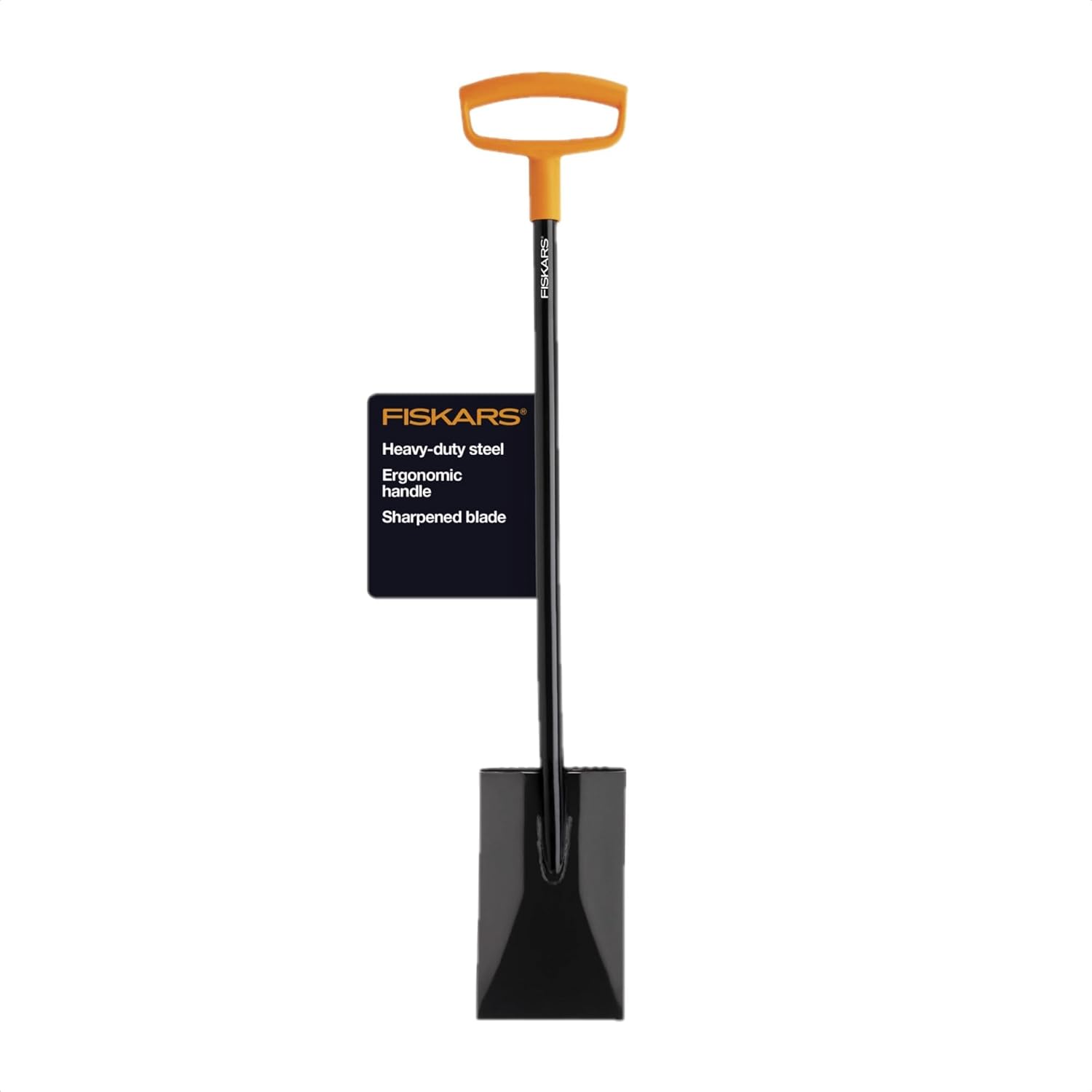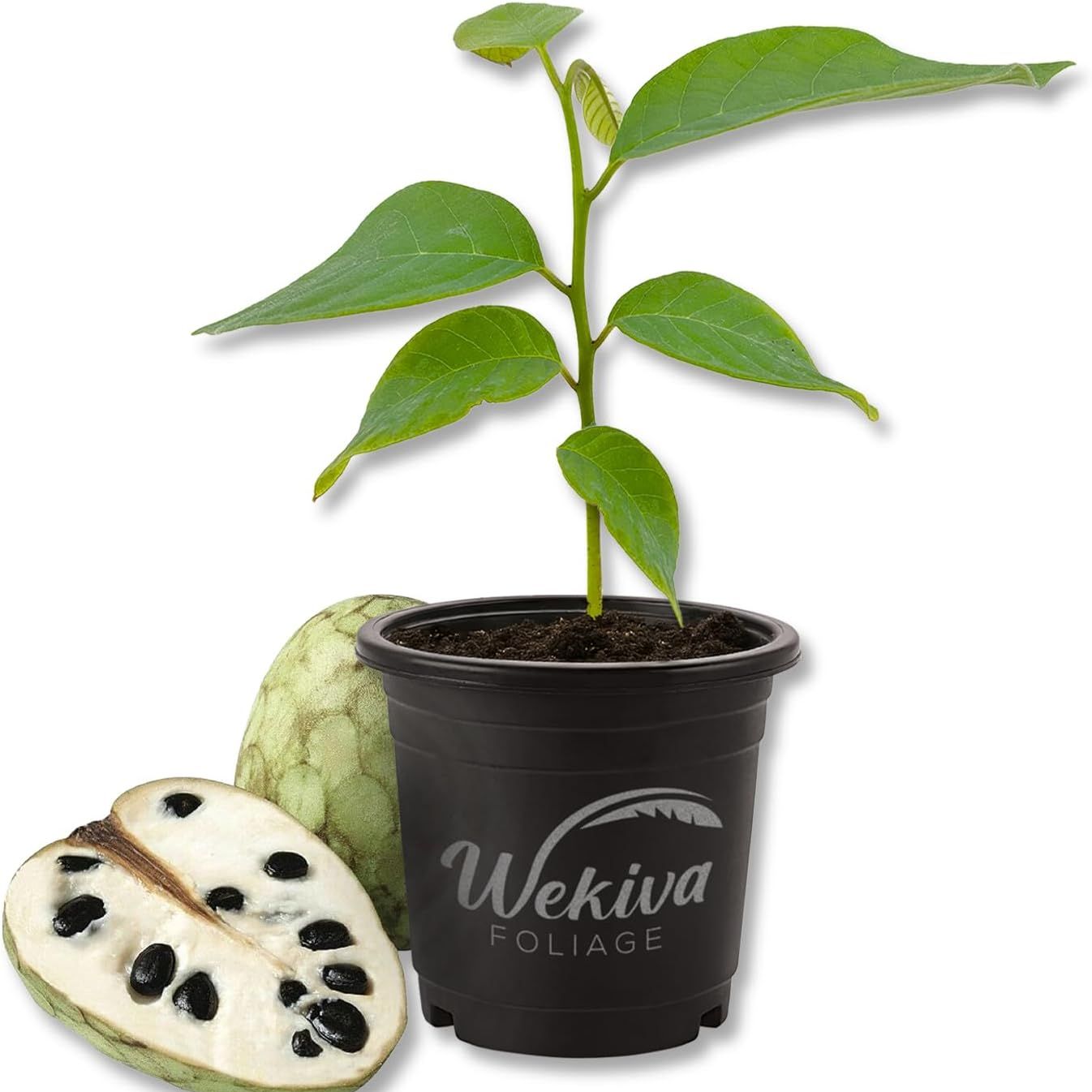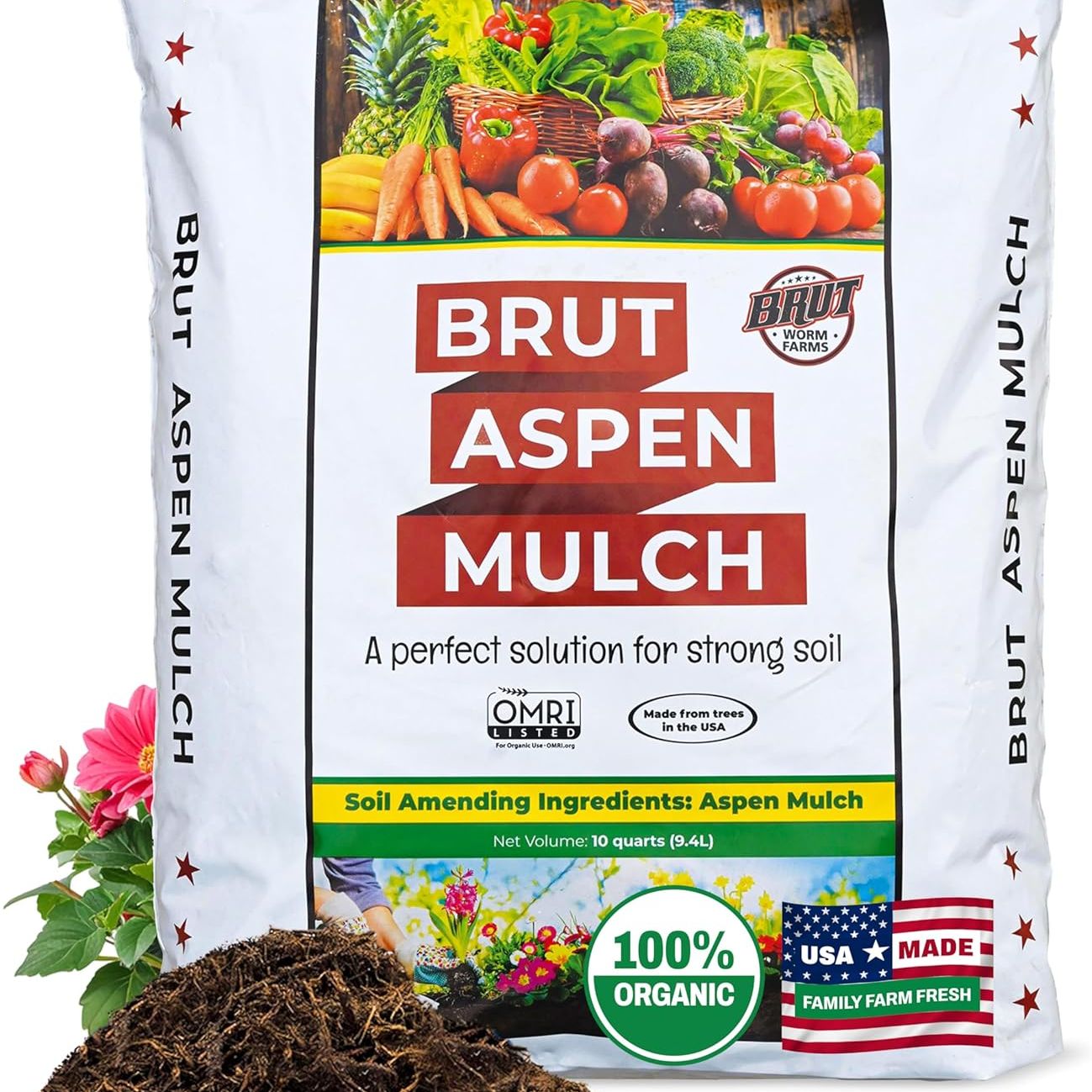For a Low-Maintenance, Tropical Fruit Tree, Nothing Beats the Custard Apple – Here's An Expert Guide to Growing One
Known for their delicious fruits, cherimoya trees can be a wonderfully exotic addition to your backyard planting

Rachel Bull
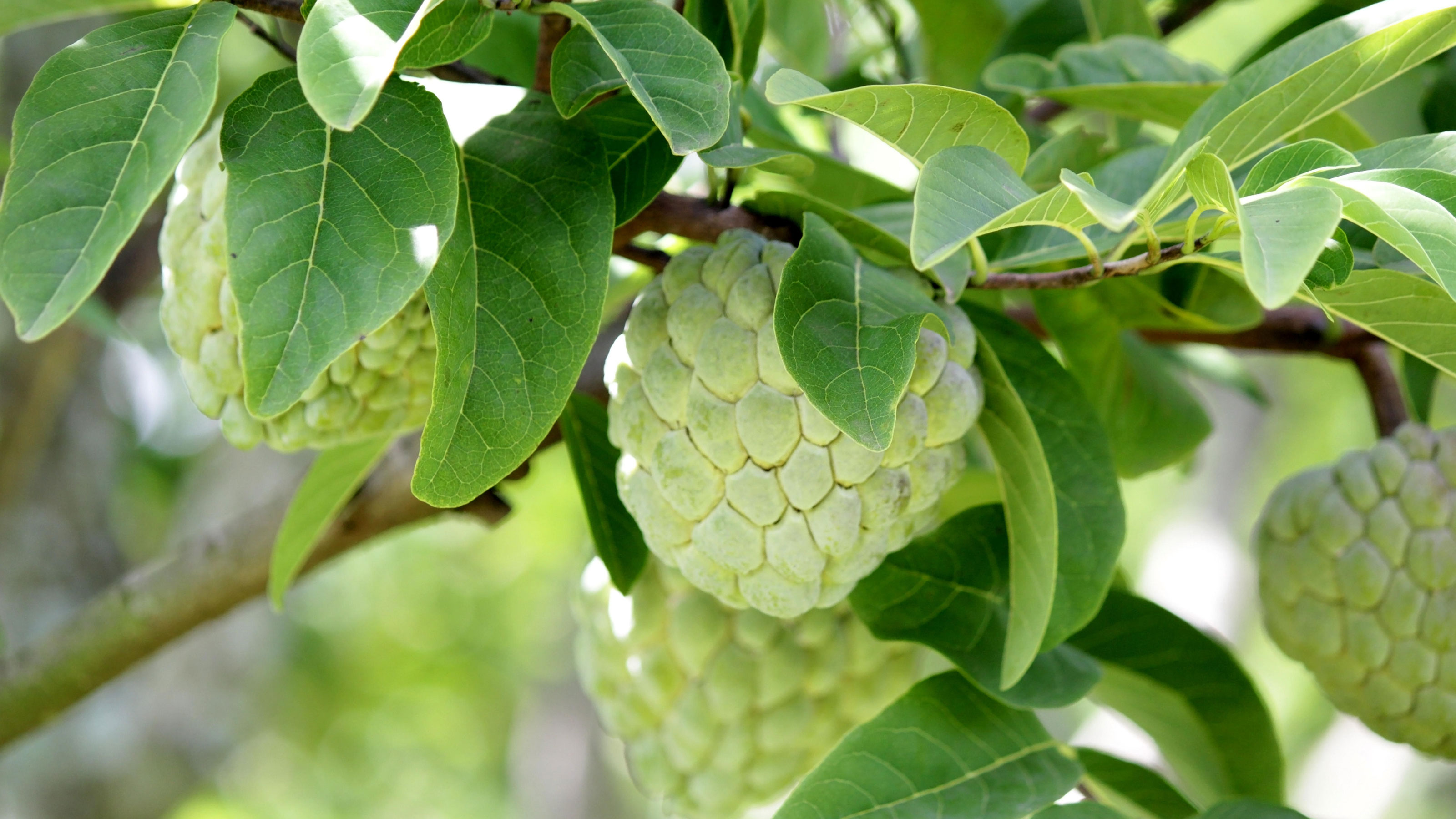
Cherimoya trees, also known as custard apples, are a small broad-headed evergreen tree grown for its large, exceptionally delicious fruits and tropical foliage.
Its erect growth, which spreads as it matures, carries dark green and slightly aromatic leaves a little like those of a laurel or rhododendron. In cooler climates, the tree may lose its leaves for a short while, often as new leaves are opening. The small greenish flowers are carried on short stalks in groups of up to three at the leaf joints and are yellowish green in color and fruitily scented, the smell that attracts beetles to pollinate the flowers.
Once established, these ornamental, subtropical fruit trees are low maintenance and easy to care for. Ideal for USDA hardiness zone 10, this tree is a naturally compact species that will thrive in warmer climates. Here we share everything you need to know about planting, growing and nurturing the sublime cherimoya tree.
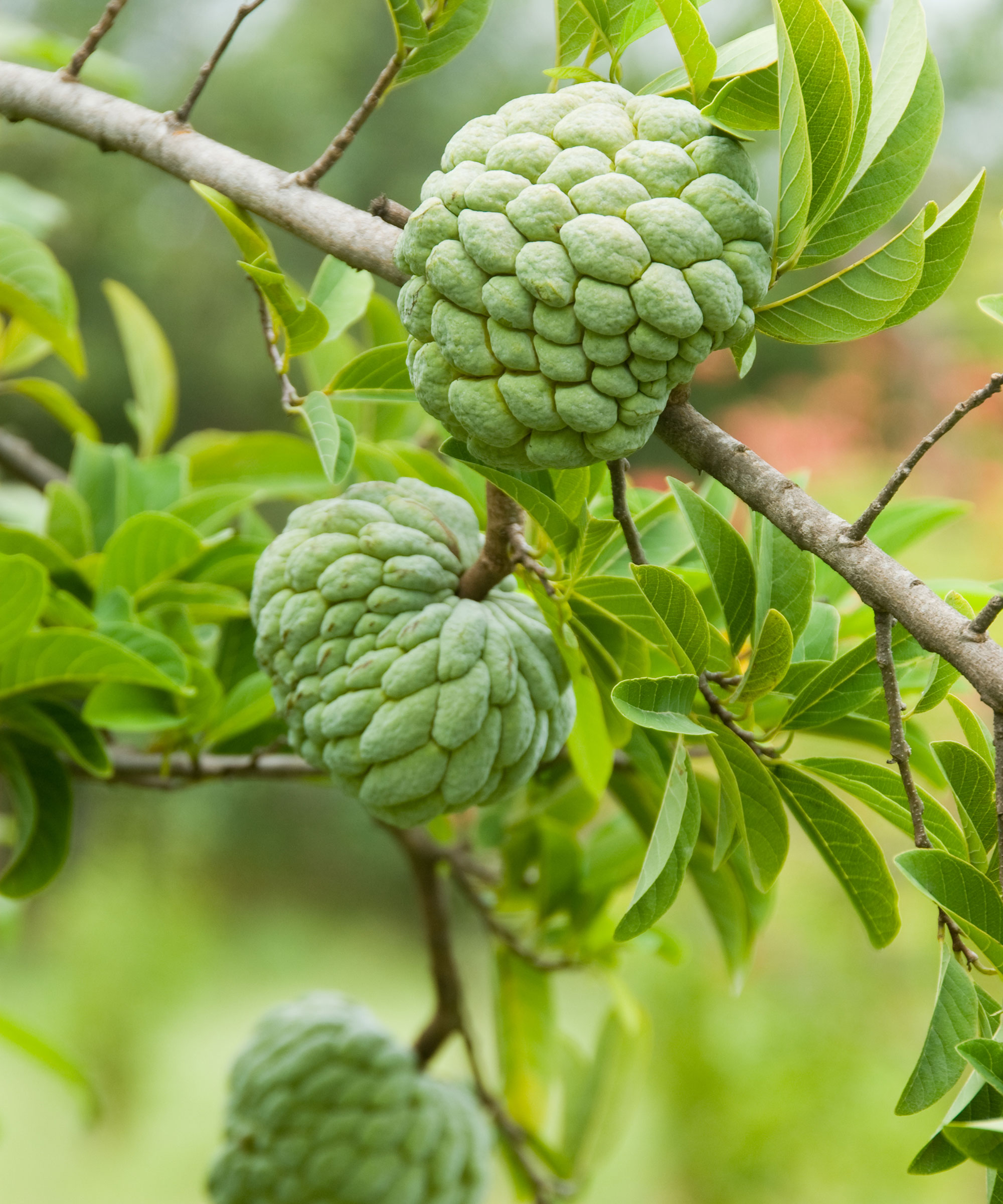
Cherimoya trees: key facts
- Plant type Evergreen, subtropical tree
- Mature size 25-30ft (7.5-9m)
- Soil type Fertile and well-drained
- Soil pH Slightly acid, neutral, alkaline
- Time to plant Late spring
- Flowering time Summer
- Flower color Greenish yellow
- Fruiting time Summer
- Fruit color Green, then yellowish and often softly spiny
- Hardiness zones USDA zones 9-12
- Scientific name Annona cherimola
- Common name Cherimoya, soursop, graveola, guanabana, custard apple
How to choose a cherimoya tree for your yard
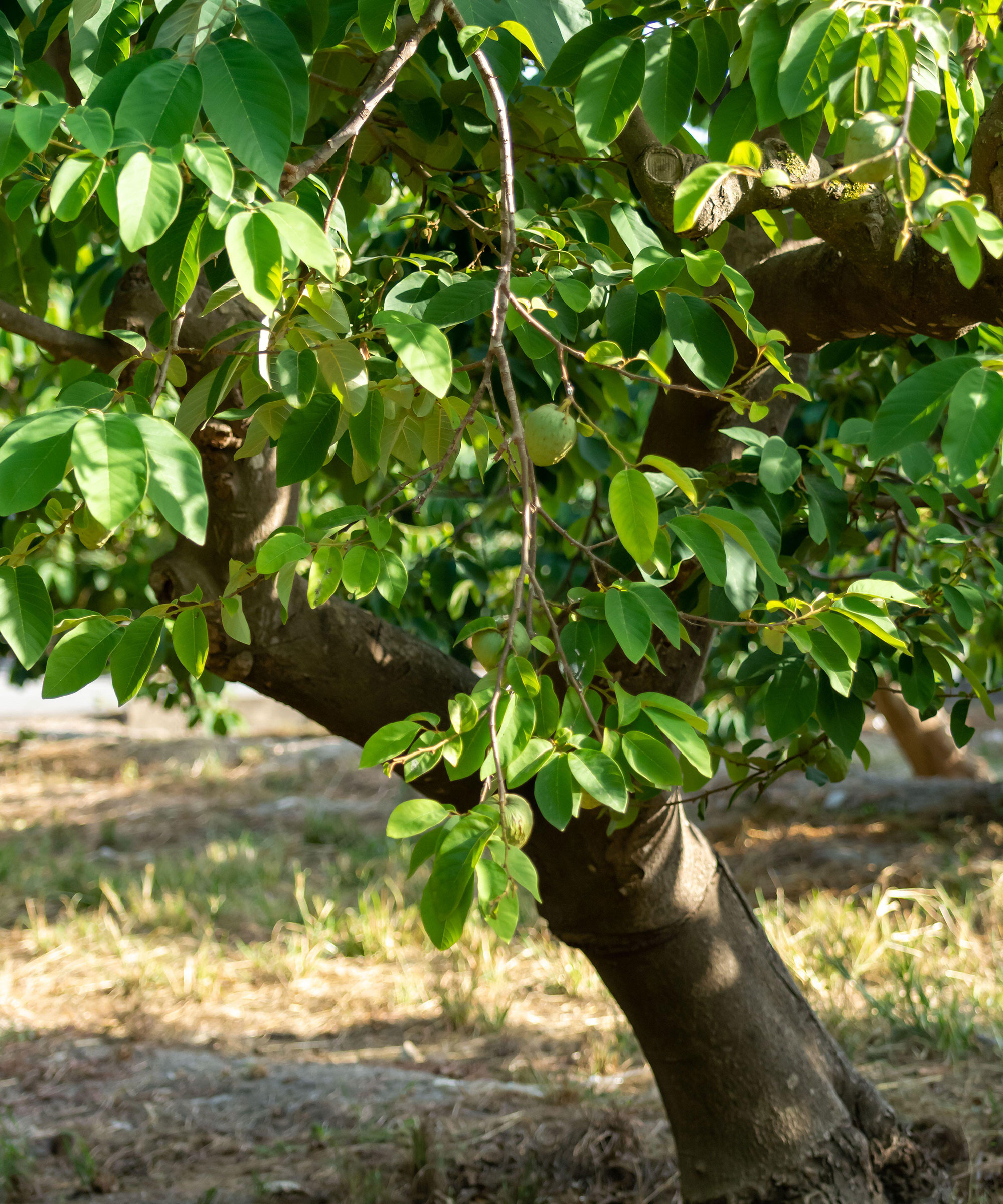
The best thing to do is to try and find a named variety. There are over a dozen named varieties of cherimoya trees, some are noted for their flavor, or their ability to grow in cooler conditions than other varieties, or for their capacity to produce fruit (although not always a full crop) without hand pollinations.
Cherimoyas are relatively small to medium sized, but they are fast growing trees. They can be sufficiently mature to bear their first fruits just two years after planting and may eventually reach 35ft (10m) in height and spread. They can live for up to 50 years.
However, regular pruning is advisable to keep the flowering and fruiting growth at a manageable height for hand pollinating and harvesting.
The rounded, more or less heart-shaped, fruits are pale green or creamy yellow and about 4in (10cm), sometimes even up to 10in (20cm), long. They are made up of many small individual fruits all fused together to look like one large fruit.
Design expertise in your inbox – from inspiring decorating ideas and beautiful celebrity homes to practical gardening advice and shopping round-ups.
Once these evergreen trees are mature, they may produce from 30 to over 200 fruits per year, depending on age, growing conditions, and variety.
Fruits may take a year to ripen, and mature in summer, as the flowers for the next year’s fruits are opening, and eventually become pale green or creamy yellow.
It isn't always easy to find cherimoya trees online, and might be better searching in your local nursery. However, you can find young cherimoya plants at Amazon, and custard apple trees are also available at Walmart.
Names varieties to look out for are:
- ‘Big Sister’ has large, well-flavored fruits and will often crop without pollination.
- ‘Bronceada’ is also well-flavored but also tolerates cooler conditions and often self-pollinates.
- ‘Nata’ has a good flavor, fruits better than most when young, and may self-pollinate.
- ‘Sabor’ has perhaps the best flavor but the fruits can be small.
The ideal location to plant cherimoya trees

Cherimoyas make good backyard trees and grow well in USDA Zone 10. Young trees should survive 30˚F (-1˚C) while mature trees should take 27˚F (-3˚C). However, unlike many tropical fruit trees, they dislike constant high heat and high humidity.
In fact cherimoya trees need at least 100 hours at 43˚F (6˚C) or lower each winter to initiate spring growth and flower development.
They need full sun, preferably combined with cool nights, and although they appreciate full sun the leaves can scorch without a little shade from afternoon heat. They are more susceptible to cold chills than avocado trees or citrus but enjoy cool sea air. Areas with cool, dry winters suit them best.
The branches of cherimoya trees usually become quite brittle and the weight of ripe fruits combined with strong winds can cause damage, so look for a site sheltered from strong prevailing winds. If growing more than one cherimoya tree, space them 20-30ft (7-9m) apart.
How to plant cherimoya trees
Late spring, around May, is usually the best planting time for fruit trees. Dig a hole twice as deep as the roots on your young tree and twice as wide. Mix well-rotted garden compost or manure, plus a handful of general fertilizer, into the base of the hole and also mix it in equal parts with soil removed from the hole.
Place the tree in the hole, adjusting its depth so that the soil mark on the stem of bare root trees, or the surface of the soil in its pot, is level with the surrounding soil. Spread the roots out well, if necessary, and carefully refill the hole with the amended soil, working it around the roots.
Support the tree with a stout stake, exactly like this one on Amazon, knocked in at an angle to avoid damaging the roots and tied to the trunk about 2-3ft (60-90cm) above ground. Drive the stake into the ground to the side of the hole to at least 2ft (60cm) deep. Leave the stake in place until the tree is growing well.
After planting water in thoroughly, adding a liquid feed to help give the young tree a good start.
How to care for cherimoyas

Cherimoya trees appreciate consistently moist soil but overwatering, so that the soil becomes waterlogged, encourages root rot. As a precaution, it is usually wise not to water in winter but it pays to fertilize your cherimoya tree every two or three months during the growing season.
Cherimoya fruits can weigh as much as a pound (450g) each and the slender branches that develop on an unpruned tree may break under the strain of supporting ripe fruit.
If you're not sure when to prune fruit trees like cherimoyas, the best time is generally when the tree is dormant. Select two shoots for very 2ft (60cm) of trunk to be the main branches, ensuring they are spread all round the trunk.
Cut them back to 2ft (60cm). The following year, cut each new shoot back leaving about five or six buds at the base to develop fruits and flowers. Also, check for branches rubbing against each other, and cut out the weaker.
How to make more cherimoyas
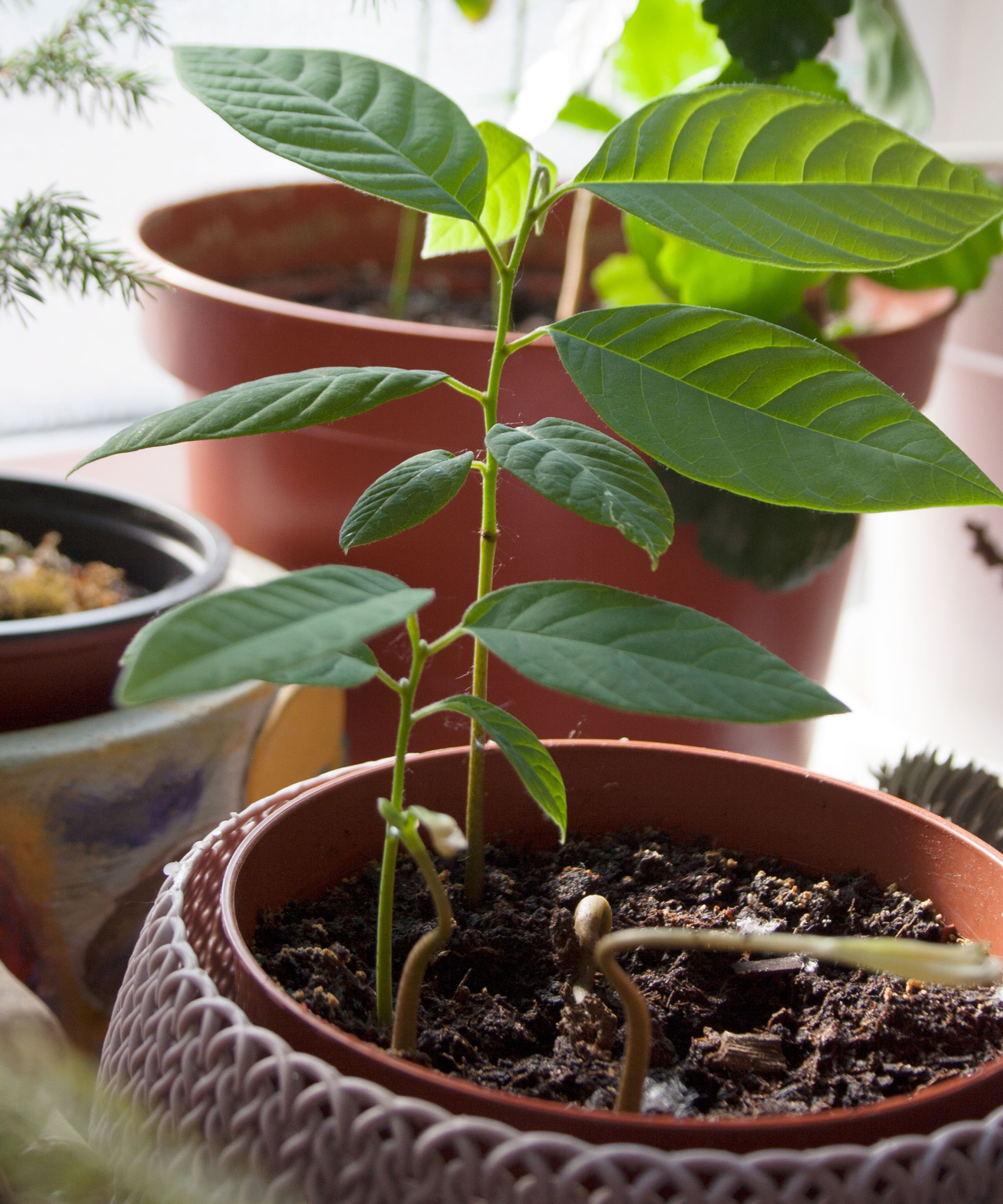
There are two ways to propagate cherimoyas to get free plants: from seeds and from cuttings.
Seeds sprout readily, in fact if you leave the fruits on the tree they will burst and the seeds may start to germinate before the fruits have even dropped off. So you can either collect seeds from a ripe fruit or buy seeds mail order.
Soak the seeds in water for three days, then plant two seeds, an inch deep, in a 5in (12.5cm) pot of seed starting mix. Keep the pots at a temperature of 65-75˚F (18-21˚C), the seeds should sprout in four or five weeks. If both sprout, remove the weaker of the two.
Grow the seedlings on until roots start to peep through the holes in the base of the pot then either plant them or move them into a larger pot – preferably one that is deeper than it is wide. Cherimoya seedlings have deep roots.
Cherimoyas can also be grown by taking cuttings. In winter, cut shoots 8-12in (20-30cm), long trimming them just below a bud at the base and just above a bud at the tip. Fill a pot with a 50:50 mix of sand and seed starting mix, choose a pot deep enough so that only the top bud is above the surface of the mix.
Keep the pot in a warm, light place until roots start to appear through the drainage holes in the base – usually after four to six weeks. At this stage, plant them out.
How to harvest cherimoya fruits

The fruits on a cherimoya tree usually take five to seven months to mature, sometimes longer, and are ready to pick when they are still firm but have changed color from dark green to a more yellowish green.
The best flavor comes with leaving the fruits on the tree as long as possible, so that they start to soften, but not so long that they burst. The fruits finish ripening after picking and must be eaten promptly as the flavor quickly takes an unpleasant turn.
Although usually much smaller, a report in the Journal of the Jamaica Horticultural Society states: 'The fruits vary in weight between three and eight pounds, exceptionally large ones may reach sixteen pounds and over.'
The fruits do not store well so if you have more than you can use ripening at the same time, be sure to give away the surplus.
FAQs
Is the whole cherimoya fruit edible?
No. Most parts of the cherimoya tree are poisonous, in fact only the delicious creamy white flesh is edible. In particular, discard the skin and the seeds. The seeds are like small black beans and show up well against the white flesh so there is little chance of eating one by mistake.
The seeds are toxic in a variety of ways and, although some effects are not serious, they are always best avoided. They have sometimes been used to create an insecticide.
But the flesh of the cherimoya was described by Mark Twain as 'Deliciousness itself'.
Are cherimoya trees self-pollinating?
Cherimoyas originate in the mountains of Peru and Ecuador where the flowers are pollinated by a specific type of beetle. Unfortunately, this type of beetle is not found elsewhere so in gardens cherimoyas may go unpollinated and fruit development may be poor unless the flowers are pollinated by hand.
Each segment of the fruit, with its white flesh containing a single black seed, is the result of one pollination, so the more pollinations the larger the fruit.
The male and female parts are carried in the same flower but, unfortunately, they do not ripen at the same time – the female parts ripen first, then a few hours later the male parts shed their pollen.
The simplest approach to pollination is to use an artist’s paint brush and simply pollinate every flower you can reach. Insert the brush into a flower till the tip of the brush touches the base. Twizzle it around a little to collect a little pollen then move on to the next flower. Insert the brush into each flower, rotate it just a little, then move on to the next flower, again and again.
Deal with as many flowers as you can reach. Simply leave the flowers high on the tree unpollinated, it would be difficult to harvest those fruits anyway.
This approach sets aside the need to identify whether male or female flowers are receptive – simply use the brush on them all and enough flowers should be pollinated to give you a crop.
Start hand pollinating in late spring or early summer, and go round the tree pollinating two or three times at four or five day intervals.
Cherimoya trees are fairly adaptable when it comes to soil types, happy in sand or clay, although they prefer a rich and fertile soil with good drainage.
They tend to develop a tap root, so sites with deep topsoil grow good cherimoyas but, crucially, the trees do not thrive in containers. For more beautiful species that are perfect for warmer hardiness zones, these drought-tolerant fruit tree options are great suggestions.

Graham Rice is a garden writer who has won awards for his work online, and in books and magazines, on both sides of the Atlantic. He is a member of a number of Royal Horticultural Society committees and the recipient of the 2021 Garden Media Guild Lifetime Achievement Award. He gardened in Pennsylvania for 20 years, but has recently returned to his native England.
- Rachel BullHead of Gardens
